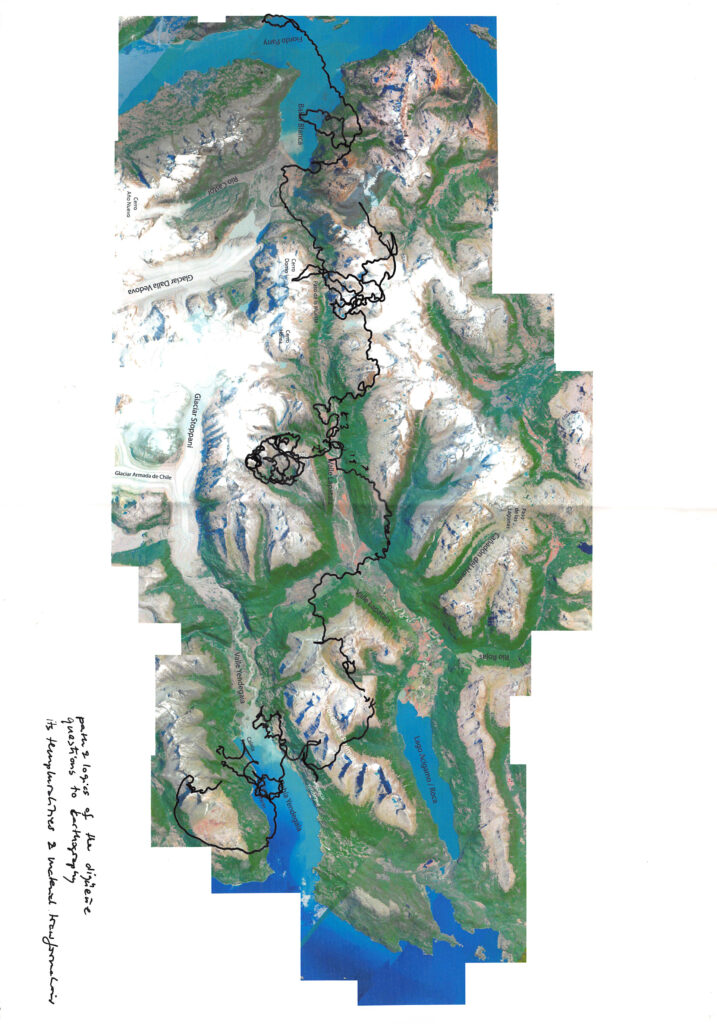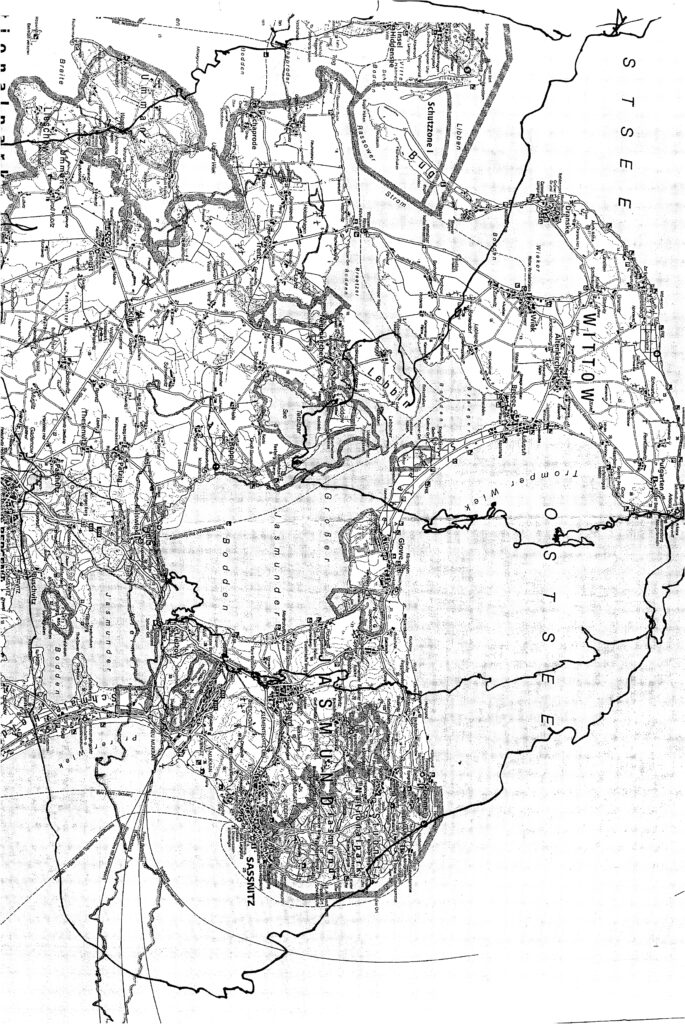Walking along a border is the same as following any other path or track. While walking you start inhabiting a zone. This border path is unmarked, there is no trail, only a direction across country. You might think that you are following a line, but you have entered a multiplicity of presences, an ecological continuum, where past, present and future intertwine cross-linking animate and inanimate beings and surroundings.

A map might imprint and impose a line. Yet it is a zone, a co-habitat for many. For example, the omnipresent Nothofagus parasite: Cyttaria Hariotii, Digüeñe or Pan del Indio. Both ancient and contemporary. It is populating a tree species that has already been traveling to Australia via Antarctica and back to the Southern Americas through geological times far beyond the scales of human beings’ temporal perception. Both the tree and its parasite don’t care about lines or limits as long as they are surrounded by their natural resources. The fungus needs the tree. The tree needs the ecology of the extended areas of southern South America. The parasite transforms the tree’s wood rigorously into tumors of hardened, criss-crossed wooden fibers. And its ubiquitous fruits build up significant parts of the decomposing permeable soils, through which the tree loves to grow its roots.
The parasitic fungus embodies an alternative logic, subtle and powerful at the same time. A relentless inviting call to think, inhabit and realize the world differently.
“The parasite is a microbe, an insidious infection that takes without giving and weakens without killing. Whether it produces a fever or just hot air, the parasite is a thermal exciter. And as such, it is both the atom of a relation and the production of a change in this relation.” *
A cascade of parasitic processes and relationships is at work. Inside the fungus, lives a fly – a fungus gnat from the family of Mycetophilidae. They have populated the planet, at least since the ‚Kreide‘, the Cretaceous period 145 Million years ago. The gnat is less picky than the Cyttaria Hariotii. Not only one species but many serve as their host. A myriad of open doors and richly laid tables.
No passage yet for the Cyttaria on a Nothofagus to the northern hemisphere. Yet the gnat travels the globe since millions of years. Some rest in the amber of the Baltic Sea. The Nothofagus from these archipelagic islands is the Beech tree.

Be it the Beech or the Nothofagus, often the gnats gather and hide in great numbers under the trees’ roots and holes. They are the most common in all forests around the globe. Small in size, inconspicuous in coloration they are rarely known or noticed guests. Yet their larvae are well known on the laid tables of other guests – you: the mushroom eater. Now you’re the parasite and you must be fast to digest the mushroom with the still tasteless, invisible eggs.
*Lawrence R. Schehr in Michel Serres, The Parasite, Translator’s Introduction, University of Minnesota Press, 2007
